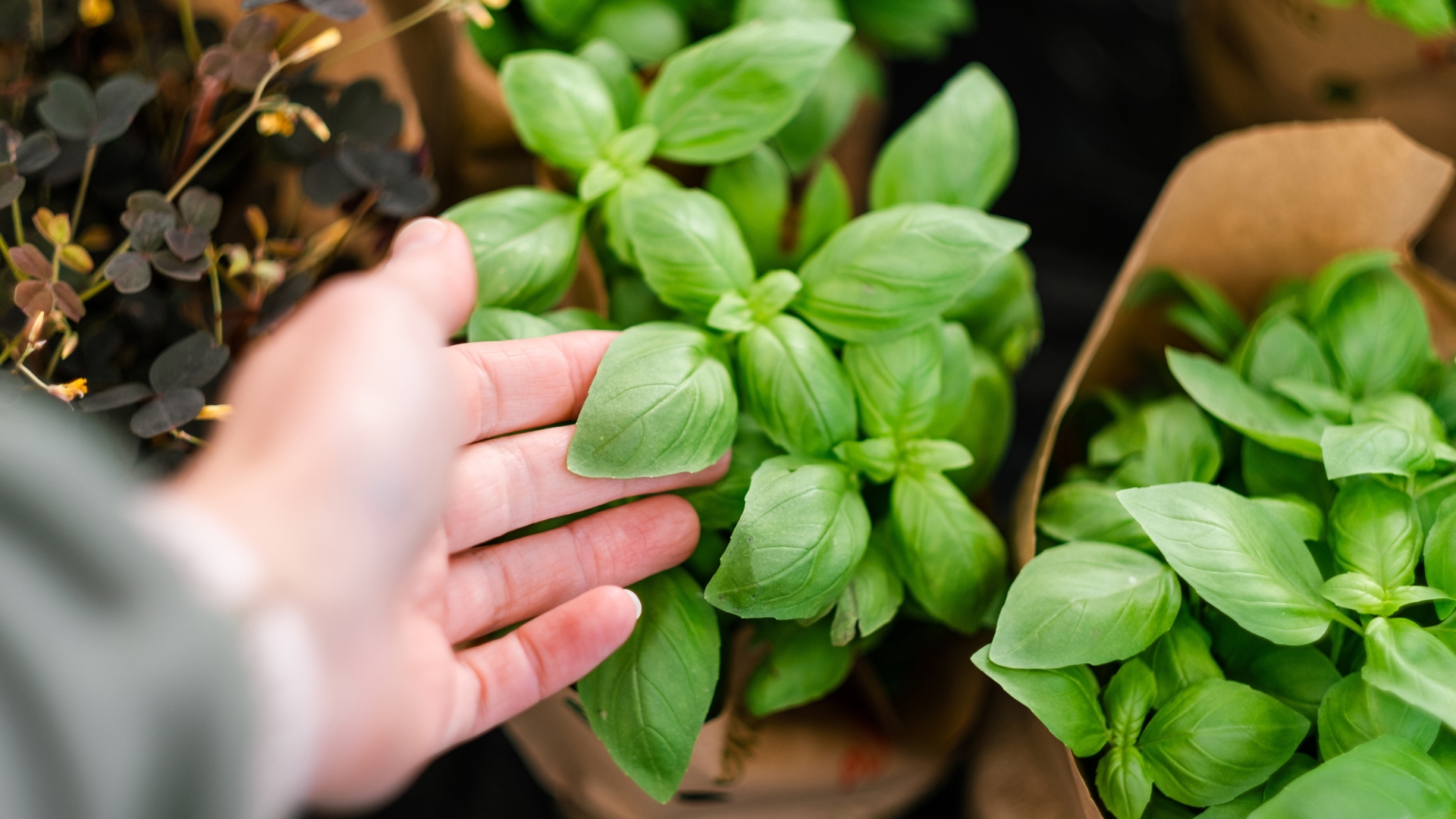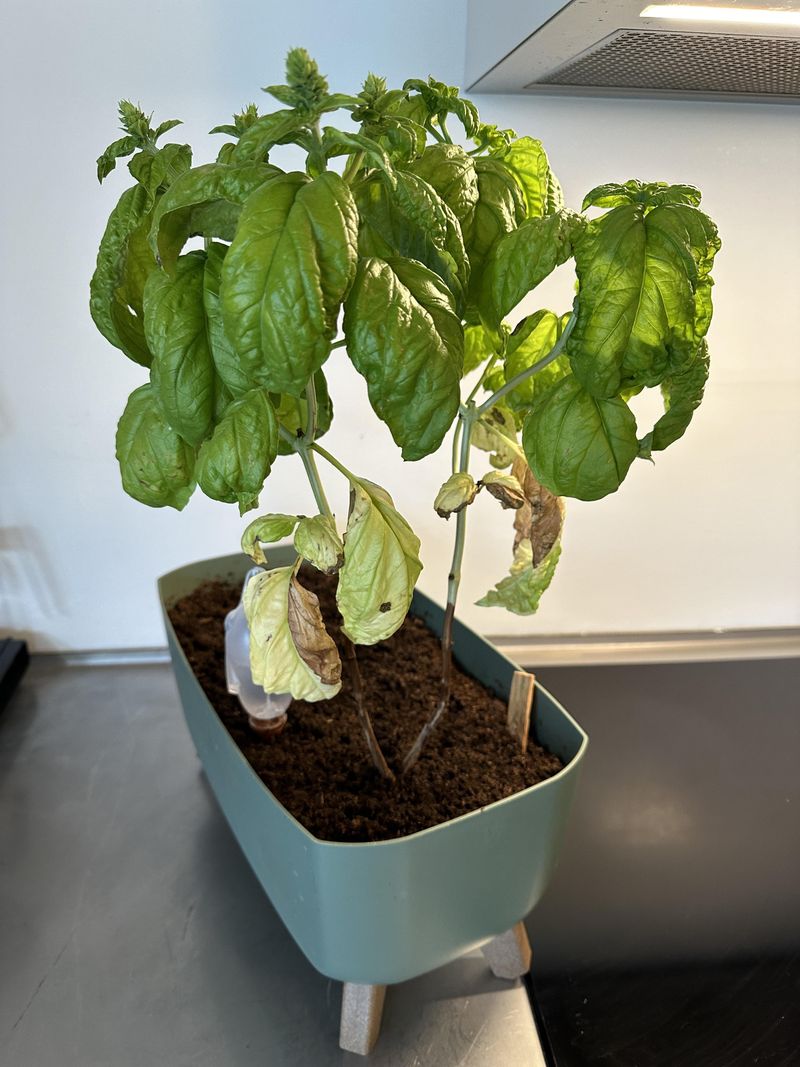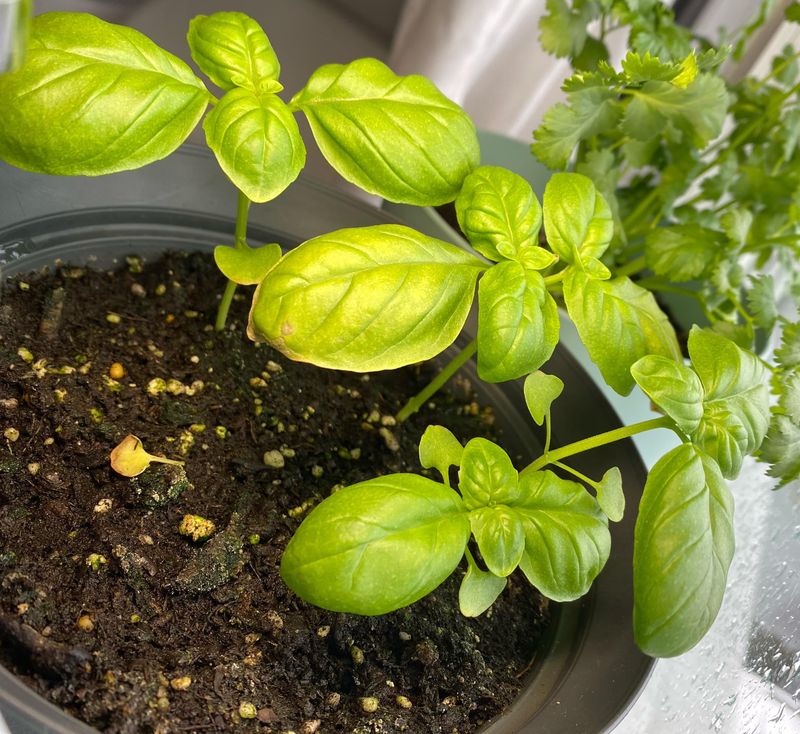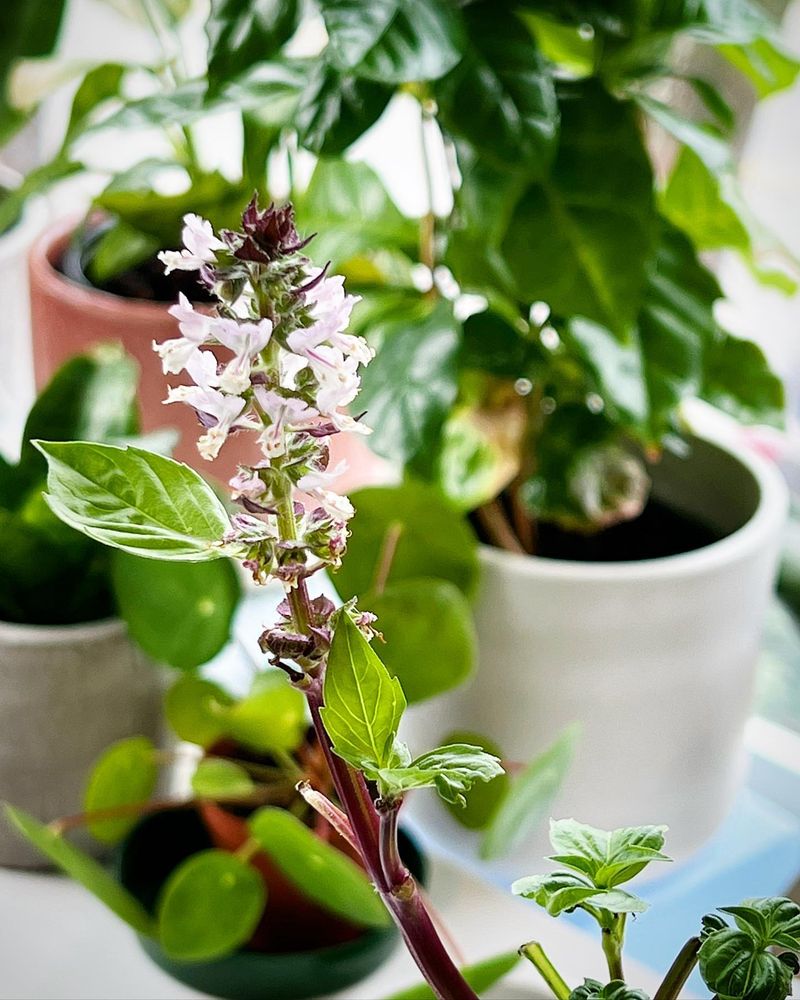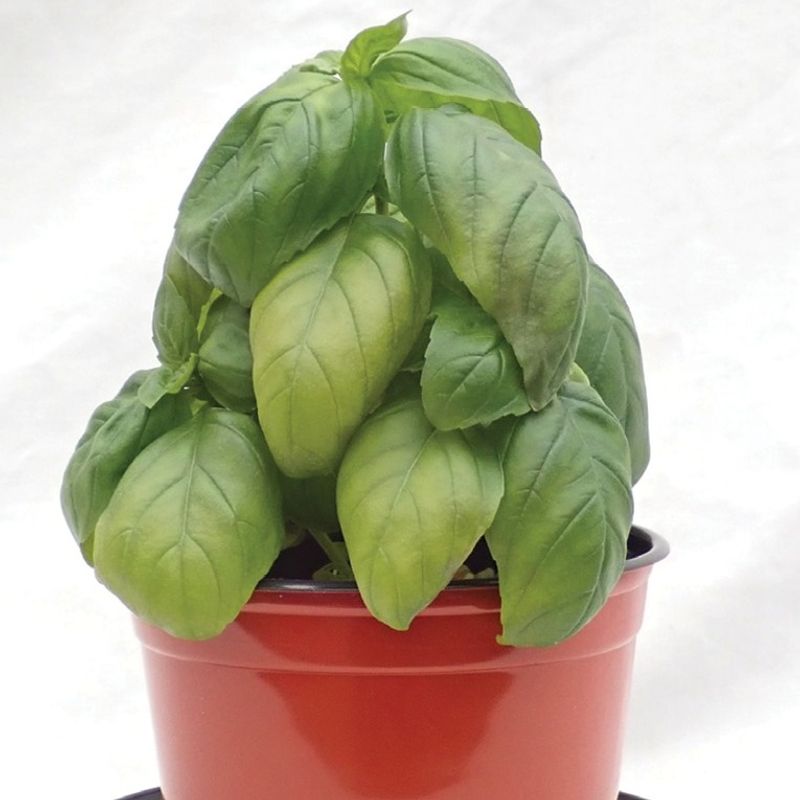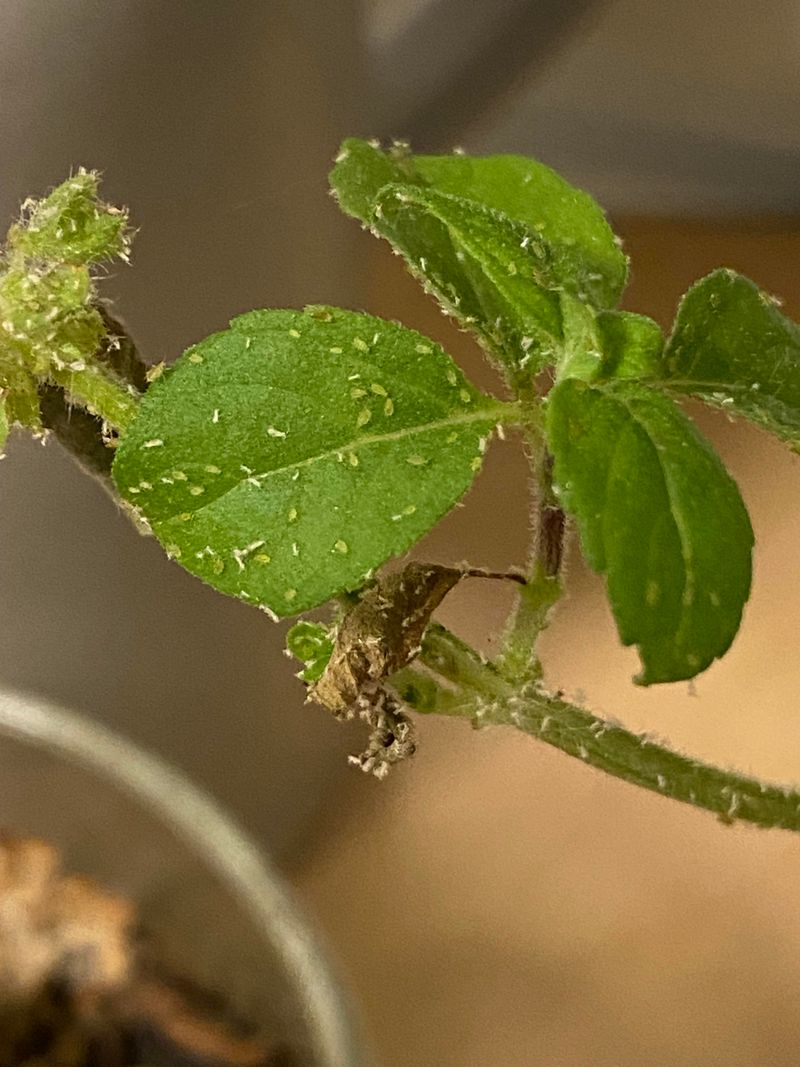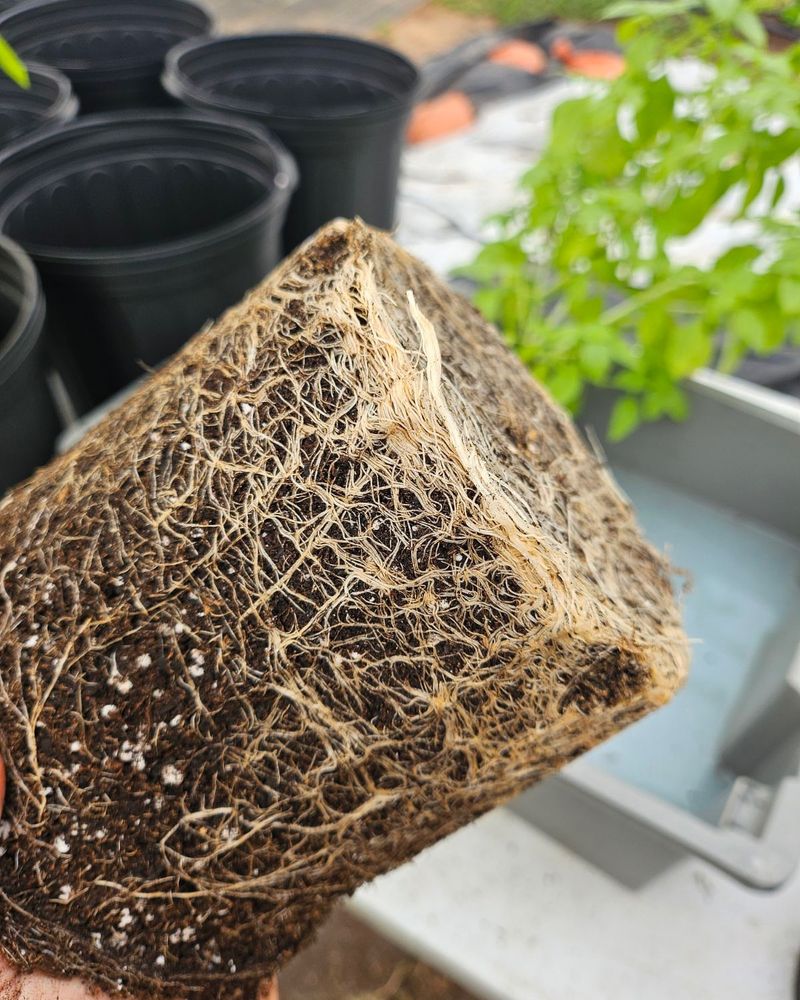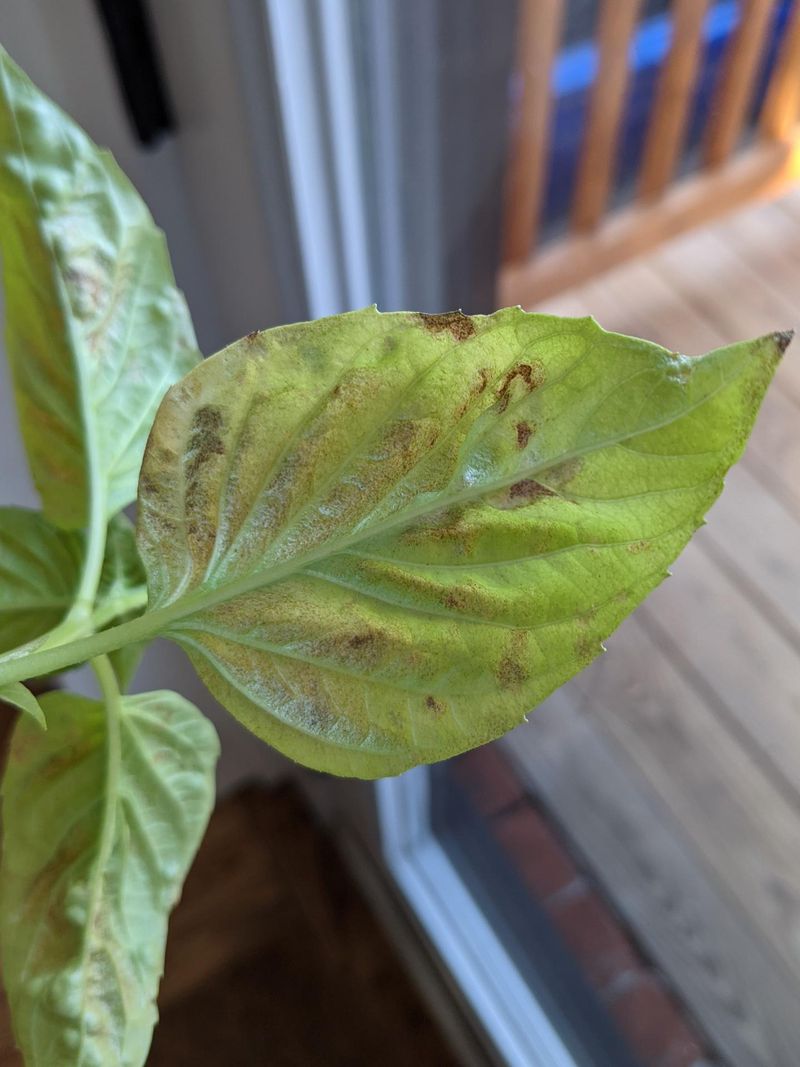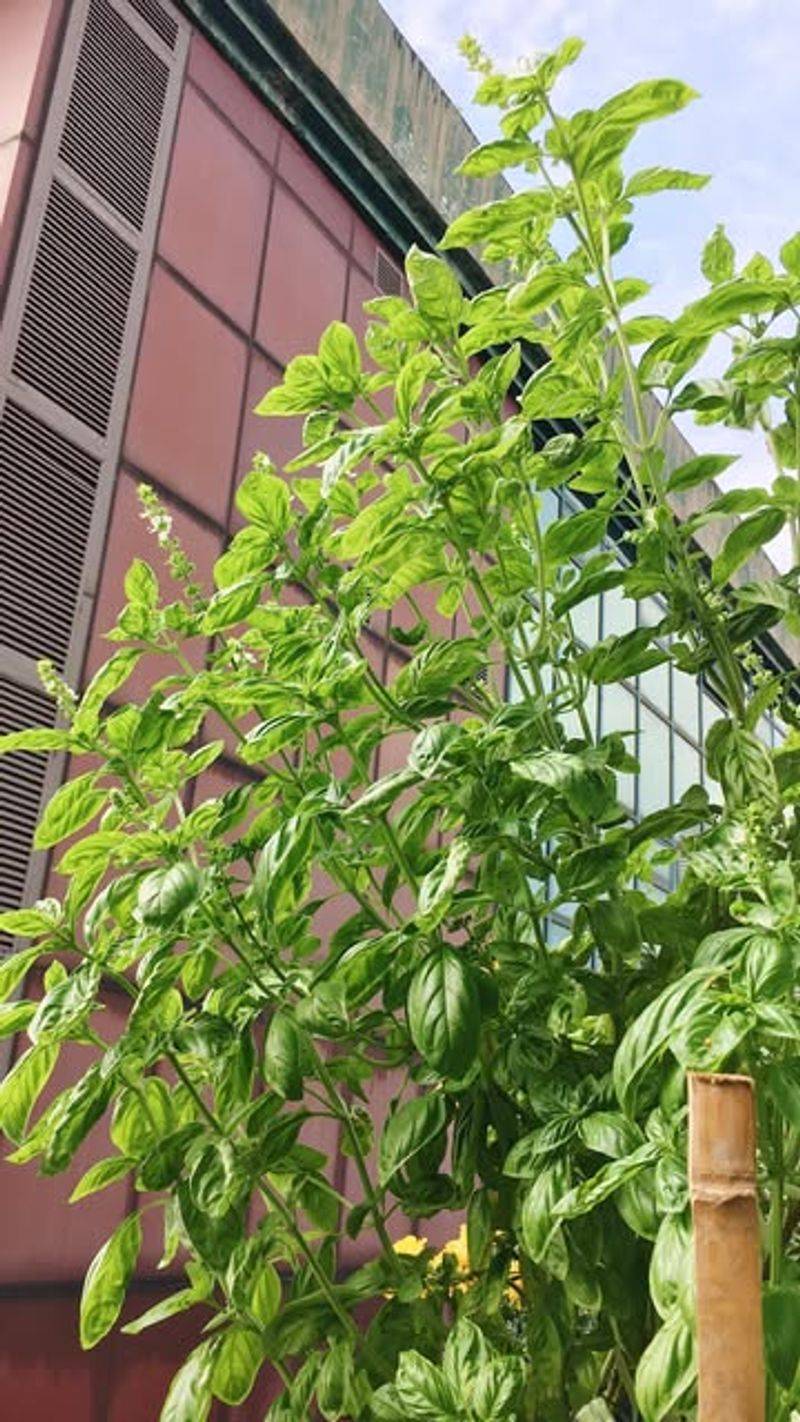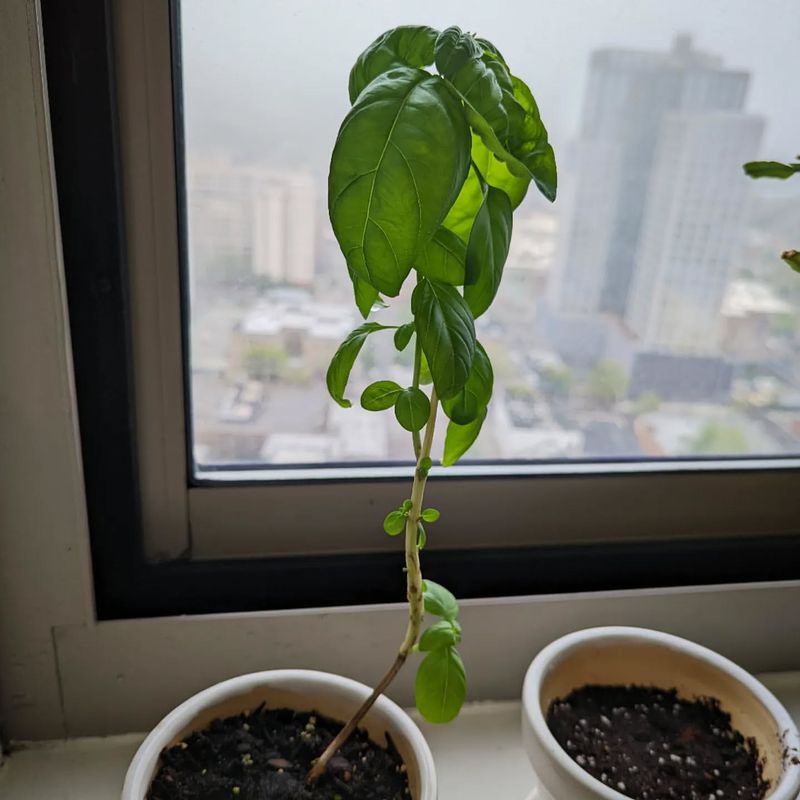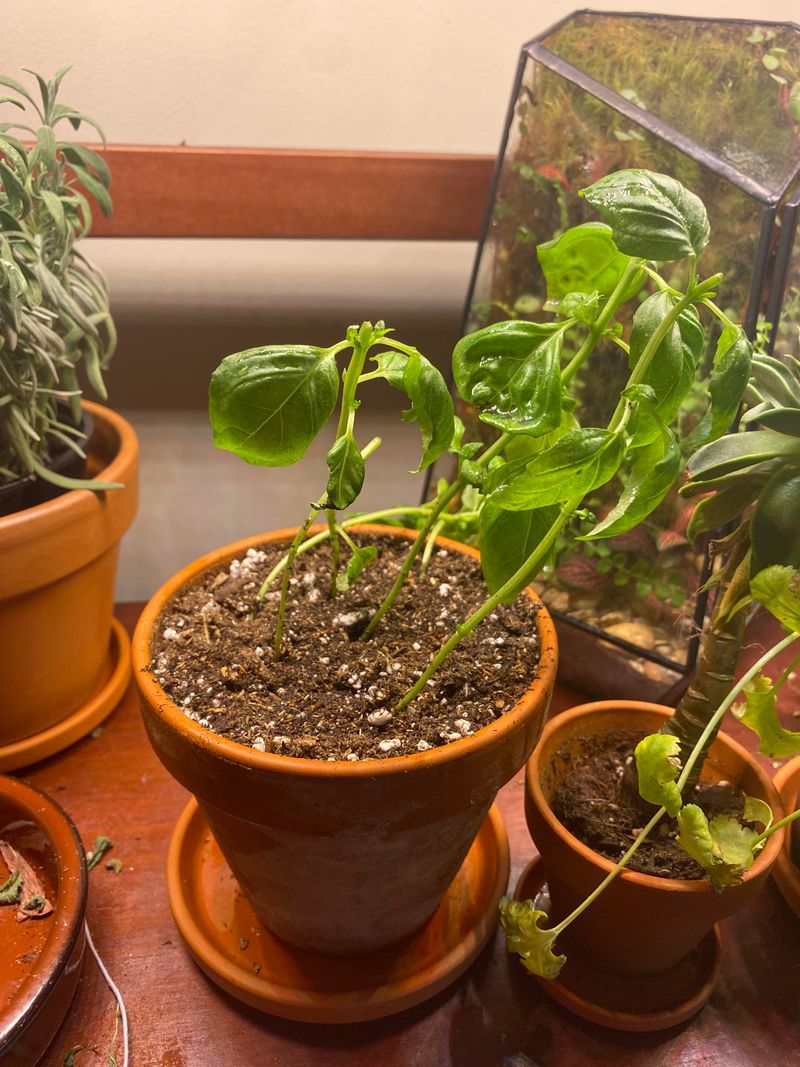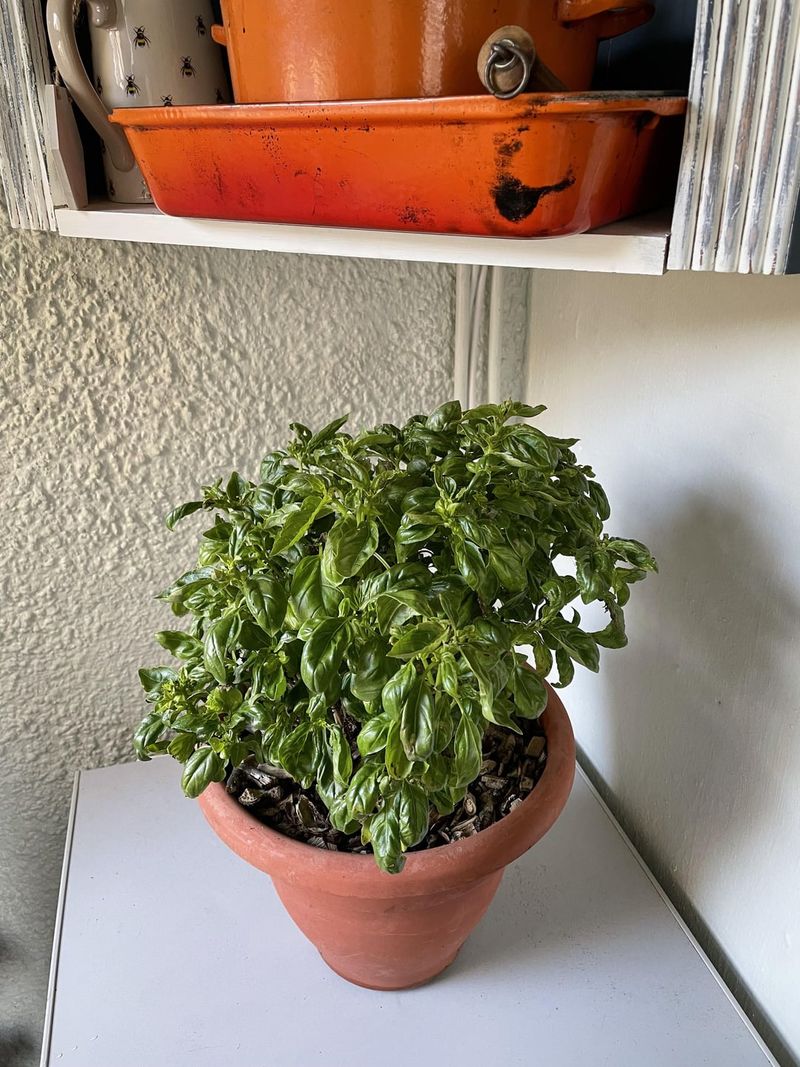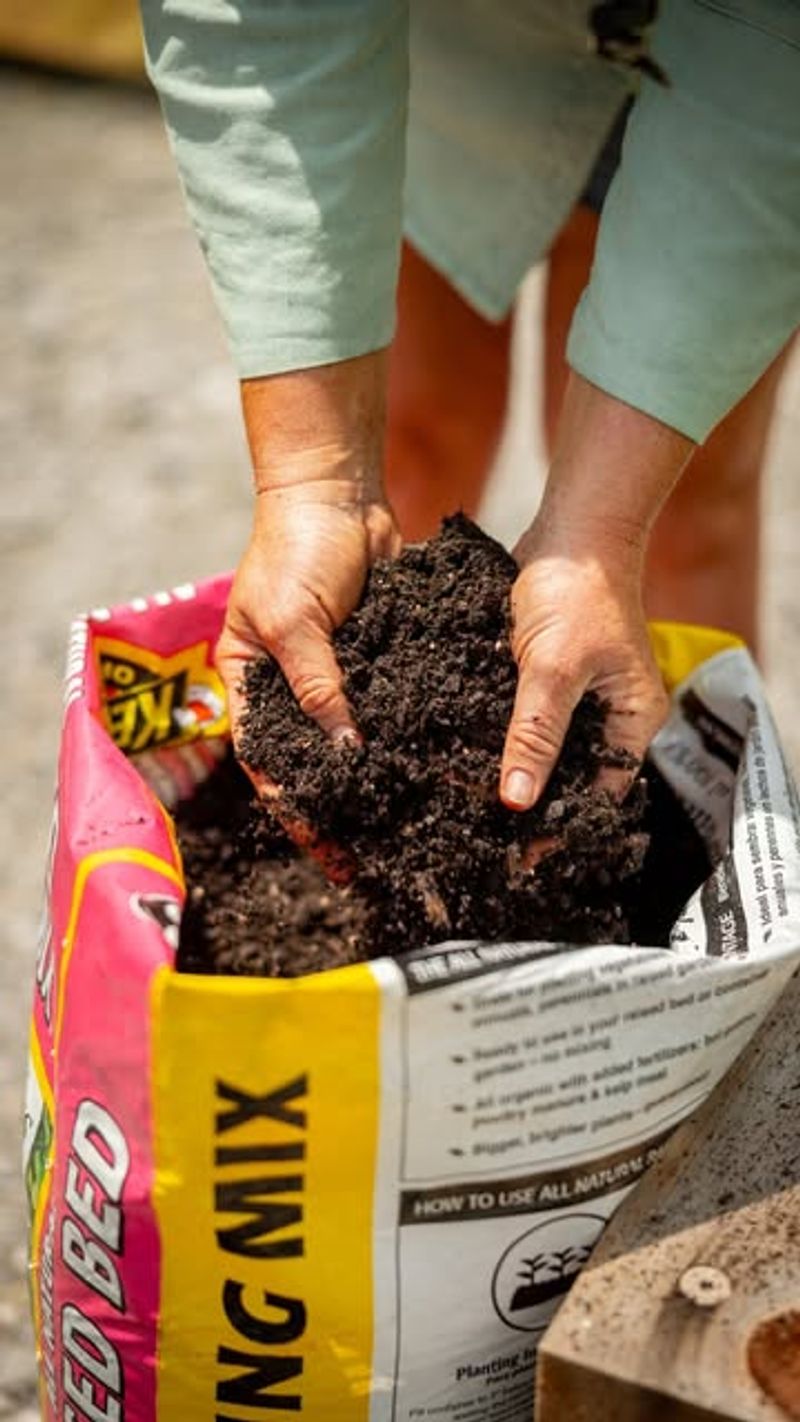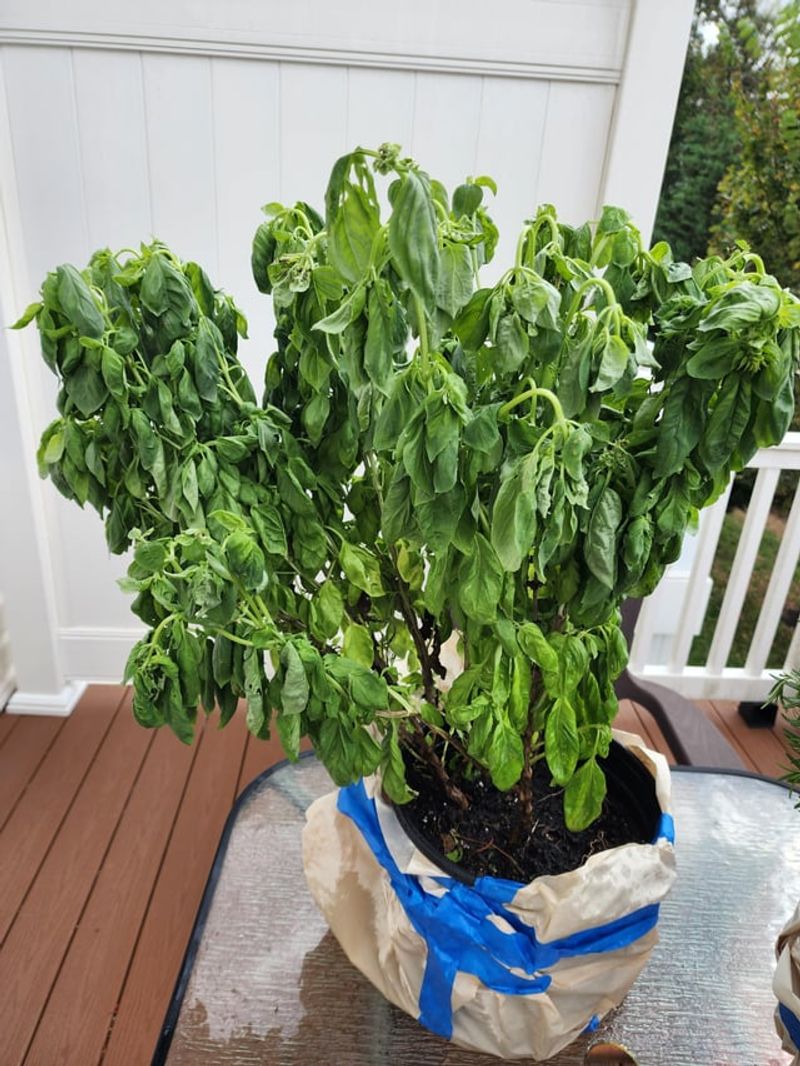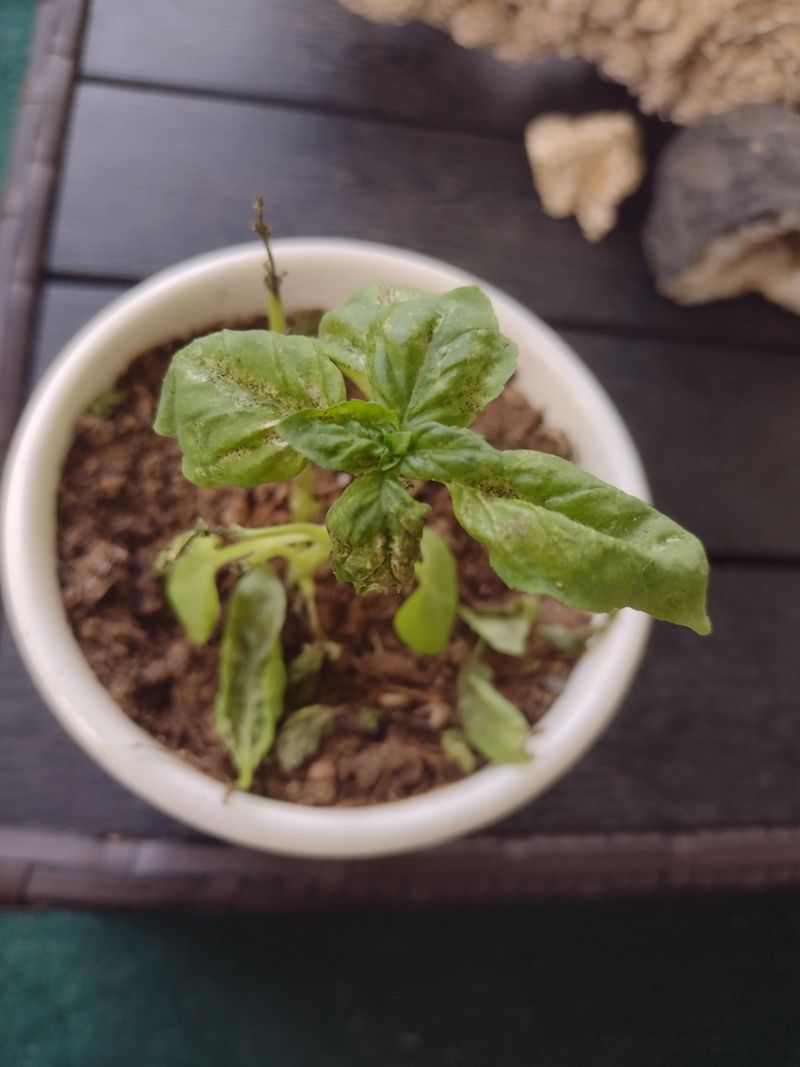Late summer can be tough on basil, and seeing those droopy leaves is a total bummer. I’ve had mine wilt after a few scorching days, and it’s usually a sign that something’s off—too much heat, not enough water, or maybe even pests sneaking in.
Basil loves a bit of love but hates being ignored when the sun is blazing. Catching the problem early means you’ll have fresh, fragrant leaves to pick all season long.
Let’s figure out why your basil is drooping and bring it back to life!
1. Heat Stress
Those scorching August days take a toll on your fragrant green friend. When temperatures consistently climb above 90°F, basil conserves energy by drooping its leaves.
Try providing afternoon shade using a garden umbrella or lightweight cloth. Morning waterings help your plant cope with the day’s peak temperatures while keeping roots cool.
2. Underwatering
Basil needs consistent moisture, especially during late summer’s dry spells. The thirsty plant shows its distress through drooping leaves that feel papery to touch.
Check soil moisture daily by sticking your finger an inch deep. If it feels dry, water thoroughly at the base. A layer of mulch helps retain precious moisture between waterings.
3. Overwatering
Surprisingly, too much water causes drooping too! Waterlogged roots can’t breathe properly and begin to rot, causing the whole plant to wilt despite wet soil.
Allow the top inch of soil to dry between waterings. Ensure your pot has drainage holes and never let basil sit in standing water. Yellow leaves alongside drooping often signal this problem.
4. Flowering
Notice tall stems with tiny white flower buds? Basil naturally shifts energy from leaf production to flowering late in the season, causing lower leaves to droop.
Pinch off those flower spikes immediately to redirect energy back to leaf growth. Regular harvesting throughout summer helps delay this natural process and keeps your plant bushy.
5. Nutrient Deficiency
By late summer, your basil might have depleted the soil’s nutrients, especially if it’s been growing vigorously. Pale leaves alongside drooping suggest it’s hungry.
Apply a balanced, water-soluble fertilizer diluted to half-strength. Organic options like compost tea work wonderfully too. Feed every two weeks to revitalize your plant’s growth.
6. Pest Infestation
Tiny invaders like aphids, spider mites, or whiteflies might be secretly draining your basil’s vitality. Check under leaves for these sneaky sap-suckers that cause drooping.
Spray plants with a gentle solution of water and mild soap. For organic gardens, introduce beneficial insects like ladybugs. Severe infestations might require removing the worst-affected leaves.
7. Root Bound
That thriving basil you planted in June might have outgrown its container by August. When roots circle around inside the pot with nowhere to go, they can’t absorb water efficiently.
Gently remove the plant and check if roots are densely packed. Transplant to a pot 2 inches larger or loosen outer roots before replanting in fresh soil to rejuvenate your herb.
8. Disease
Late summer’s humidity creates perfect conditions for fungal problems like downy mildew or fusarium wilt. Spotted leaves alongside drooping often indicate disease has taken hold.
Improve air circulation by thinning plants and watering at soil level only. Remove affected leaves promptly. Unfortunately, severe cases might require starting fresh with new plants in different soil.
9. Transplant Shock
Recently moved your basil to a new location? Plants sulk after being uprooted, responding with dramatic drooping while they adjust to their new home.
Provide extra shade for a few days and keep soil consistently moist. Avoid fertilizing until new growth appears, as this stresses the recovering root system. Patience is key—most plants bounce back within a week.
10. Age
Annual basil naturally completes its lifecycle as summer wanes. Those droopy leaves might simply signal your plant is reaching the end of its natural lifespan after months of productive growth.
Take cuttings from healthy portions to root indoors for winter. Harvest remaining usable leaves for pesto or freezing. Consider this natural transition an opportunity to plan next year’s herb garden.
11. Improper Lighting
Late summer’s shifting sun patterns might leave your once-sunny spot partially shaded. Basil stretches toward light when deprived, causing stems to weaken and droop.
Rotate containers regularly to prevent lopsided growth. Consider relocating plants to maintain the 6-8 hours of direct sunlight they crave. Indoor basil especially benefits from being moved to brighter windows.
12. Temperature Fluctuations
Late summer brings hot days but increasingly cool nights. These temperature swings stress basil, which prefers consistent warmth, causing temporary wilting during adjustment periods.
Move potted plants to sheltered locations during cool nights. A south-facing wall provides radiant heat after sunset. Consider covering outdoor plants if temperatures drop below 50°F to prevent shock.
13. Soil Compaction
Months of watering can compact soil around your basil’s roots, preventing proper oxygen circulation. Compacted soil doesn’t absorb water efficiently, leaving plants thirsty despite regular watering.
Gently loosen the top inch of soil with a fork without disturbing roots. Top with fresh potting mix or compost. For potted plants, consider repotting with fresh, loose medium.
14. Harvesting Stress
Overzealous harvesting can shock your basil, especially when cutting large stems all at once. The plant temporarily droops while redirecting energy to new growth points.
Harvest no more than one-third of the plant at once. Make cuts just above leaf nodes to encourage branching. Regular small harvests stimulate bushier growth than occasional major cuttings.
15. Chemical Exposure
Nearby lawn treatments or overspray from other garden products can drift onto sensitive basil leaves. Even organic sprays can cause drooping if applied during hot weather.
Create barriers when treating nearby plants. Always apply any necessary treatments in early morning when temperatures are cool. If chemical exposure occurs, rinse leaves thoroughly with clean water to minimize damage.

